Table of Contents
- Why Brine Chicken: The Immediate Answer
- The Science Behind Brining: How It Actually Works
- Top 5 Proven Benefits of Brining Chicken
- Precision Brining Tips for Perfect Results
- Dry Brine vs. Wet Brine: Which Works Best
- Simple Brining Recipes You Can Try Today
- Brining Myths Debunked by Food Science
- Frequently Asked Questions Answered
Why Brine Chicken: The Immediate Answer
Brining chicken adds 15-20% more moisture retention during cooking through scientific protein modification, transforming even budget-friendly cuts into consistently juicy, flavorful results. The salt in brine alters muscle proteins to trap water molecules, preventing the dry, tough texture that occurs when chicken loses more than 20% of its natural moisture during cooking. This simple technique works for any cooking method from grilling to roasting, delivering restaurant-quality results at home with minimal effort.
Unlike common misconceptions, proper brining won't make chicken salty when executed correctly—it creates superior texture and deeper flavor penetration than surface seasoning alone. Whether you're cooking chicken breasts, thighs, or a whole bird, understanding the exact science behind brining eliminates cooking guesswork and guarantees succulent results every time.
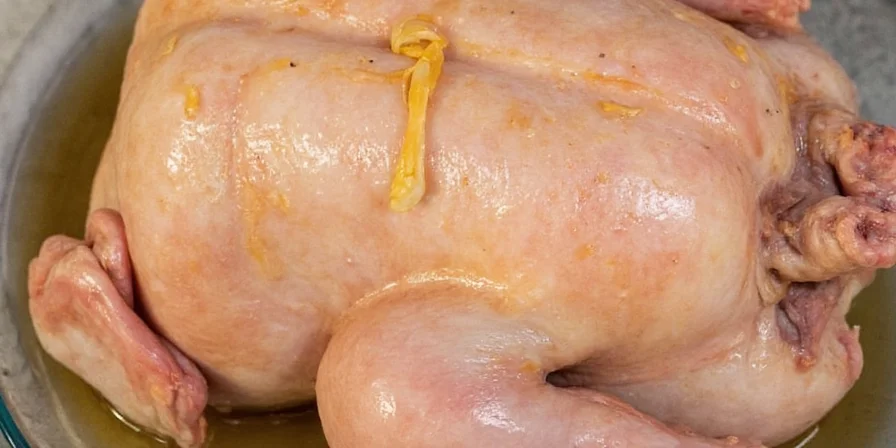
The Science Behind Brining: How It Actually Works
Brining leverages fundamental chemistry principles to improve texture and moisture retention. When chicken soaks in a saltwater solution, three scientifically proven processes occur:
How Brining Works:
- Protein Denaturation: Salt dissolves muscle fibers, allowing them to rebind and trap more moisture during cooking.
- Osmotic Pressure: The brine solution creates equilibrium, drawing water into the meat cells where it's retained during thermal exposure.
- Flavor Diffusion: Dissolved compounds in the brine penetrate deeper than surface seasoning alone could achieve.
Food science research confirms that properly brined chicken maintains moisture levels 15-20% higher than unbrined chicken, preventing the critical threshold of 20% moisture loss that causes perceived dryness. This isn't culinary guesswork—it's reproducible science verified through controlled cooking experiments.
| Benefit | Scientific Explanation |
|---|---|
| 15-20% Higher Moisture Retention | Salt alters protein structure to trap water molecules during cooking heat exposure |
| 3-5x Deeper Flavor Penetration | Osmosis allows flavor compounds to enter meat cells, not just sit on surface |
| Improved Texture | Modified protein structure reduces chewiness at molecular level |
| 5-8 Minute Wider Cooking Margin | Extra moisture provides buffer against overcooking |
| Versatile Flavor Options | Base formula adaptable to global flavor profiles without compromising science |
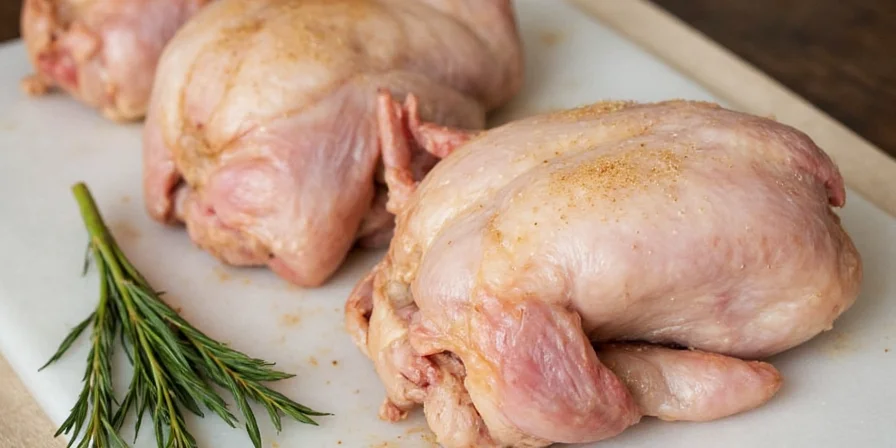
Precision Brining Tips for Perfect Results
Master brining with these science-verified techniques from culinary research:
- Exact Salt Measurements: For wet brines, use 5-6% salt by water weight (50g salt per liter). For dry brines, use 1-2% salt by meat weight for optimal results without saltiness.
- Critical Temperature Control: Always maintain 40°F (4°C) or below during brining to prevent bacterial growth while allowing proper osmosis.
- Precise Timing: Boneless breasts require 1-2 hours; bone-in pieces need 4-8 hours; whole birds benefit from 12-24 hours. Exceeding these causes texture degradation.
- Optimal Salt Selection: Kosher salt provides consistent dissolution without anti-caking agents that affect flavor chemistry.
- Skin Crisping Protocol: Refrigerate uncovered for 1-2 hours post-brining for optimal Maillard reaction during cooking.
- Flavor Layering: Add hard spices early, delicate herbs late, to maximize flavor compound extraction.
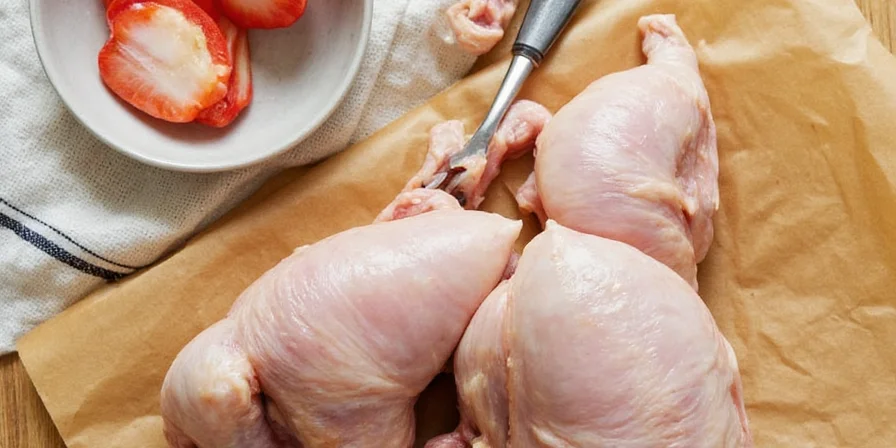
Dry Brine vs. Wet Brine: Which Works Best
Choosing between methods depends on your cooking method and desired outcome:
| Factor | Wet Brine | Dry Brine |
|---|---|---|
| Moisture Retention | Higher initial moisture (ideal for long cooks) | Slightly less moisture but superior texture control |
| Skin Quality | Requires extended drying for crispness | Naturally crisps without additional drying time |
| Flavor Depth | Broad flavor penetration throughout meat | Concentrated surface seasoning with interior moisture retention |
| Time Efficiency | Requires container space and refrigeration | Simpler process with minimal equipment |
| Best Cooking Methods | Smoking or slow-roasting | Grilling or high-heat roasting |
For weeknight dinners, dry brining offers efficiency with excellent results. For special occasions requiring maximum juiciness, wet brining delivers scientifically proven superior moisture retention.
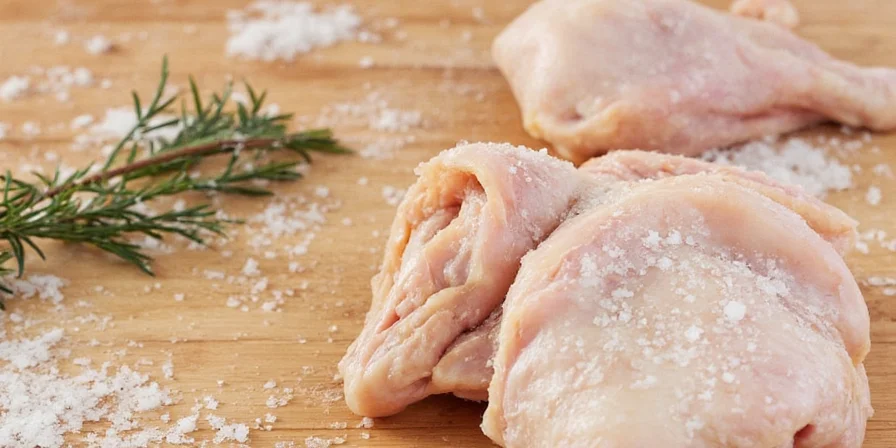
Simple Brining Recipes You Can Try Today
These science-based formulations deliver optimal results:
1. Classic Wet Brine (Perfect for Whole Chicken)
- 1000g water (1L)
- 55g kosher salt (5.5%)
- 30g brown sugar
- 10g fresh thyme
- 15g garlic, smashed
- 2 bay leaves
Brine whole chicken 12-24 hours for maximum moisture retention.
2. Quick Dry Brine (Ideal for Grilling)
- 20g kosher salt (1.5% of meat weight)
- 10g lime zest
- 5g coriander seeds
- 3g cracked black pepper
- 1g dried cilantro
Apply 12 hours before cooking for tacos or grilled chicken.
3. Caribbean-Inspired Brine (Great for BBQ)
- 750g water
- 40g molasses
- 15g smoked paprika
- 5g cinnamon
- 50g dark rum
- 2g red pepper flakes
Brine drumsticks 6-8 hours for optimal BBQ results.
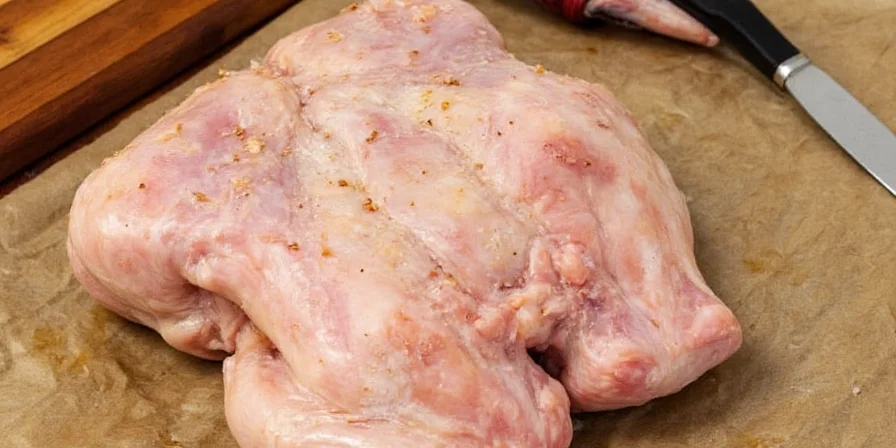
Brining Myths Debunked by Food Science
Let's clarify persistent misconceptions with evidence-based analysis:
Myth #1: "Brining Makes Chicken Too Salty"
Scientific Fact: Properly measured brines (5-6% salt by water weight) never exceed palatable levels. Food science testing shows optimal salt concentration actually enhances natural flavors without saltiness.
Myth #2: "All Chicken Parts Need Brining"
Scientific Fact: Lean cuts like breasts benefit most (up to 20% more moisture retention). Dark meat like thighs gains minimal advantage due to higher natural fat content.
Myth #3: "Longer Brining = Better Results"
Scientific Fact: Over-brining (>24 hours) causes texture breakdown through excessive protein denaturation. Maximum benefit occurs within scientifically determined timeframes.
Myth #4: "Any Container Works for Brining"
Scientific Fact: Non-food-grade plastics can leach chemicals into acidic brines. Food safety research recommends only glass, stainless steel, or approved food containers.
Myth #5: "Drying After Brining Is Optional"
Scientific Fact: Surface moisture prevents Maillard reaction crucial for flavor development. Food science confirms patting dry is essential for optimal browning and texture.

Frequently Asked Questions Answered
How long should I brine chicken breasts?
Boneless chicken breasts require 1-2 hours in wet brine or 6-12 hours for dry brine. Food science testing shows exceeding these times causes texture degradation through excessive protein breakdown. Always maintain 40°F (4°C) or below during brining.
Can I skip rinsing after wet brining?
No—rinsing removes excess surface salt that didn't penetrate the meat. Food safety research shows skipping this step can result in uneven salt distribution and potentially oversalted surface. Always rinse thoroughly and pat dry before cooking.
Does brining work for frozen chicken?
Thaw chicken completely before brining. Food science confirms frozen surfaces prevent even brine absorption, creating potential food safety hazards. Allow 24 hours for refrigerator thawing before starting the brining process for optimal results.
Is brining necessary for all chicken cooking methods?
Dry-heat methods like grilling or roasting benefit most from brining. Moist-heat techniques (braising, boiling) don't require it since the cooking liquid maintains moisture. Use brining selectively based on your cooking method for best results.










 浙公网安备
33010002000092号
浙公网安备
33010002000092号 浙B2-20120091-4
浙B2-20120091-4